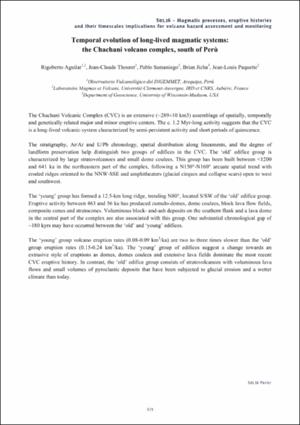Please use this identifier to cite or link to this item:
https://hdl.handle.net/20.500.12544/3829Files in This Item:
| File | Description | Size | Format | |
|---|---|---|---|---|
| Aguilar-Temporal_evolution_long_Chachani.pdf | Artículo de congreso | 141.65 kB | Adobe PDF | View/Open |
This item is licensed under a Creative Commons License












